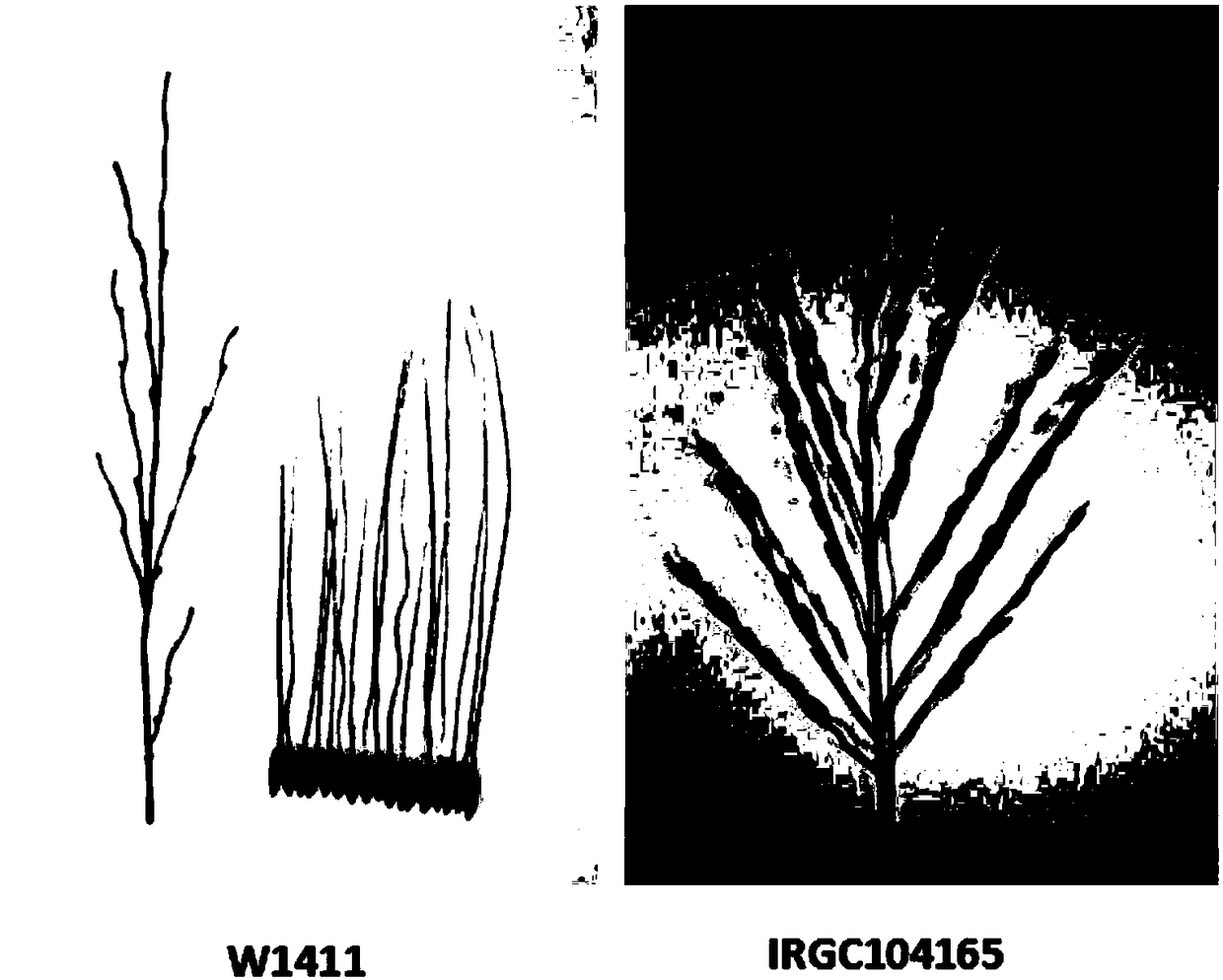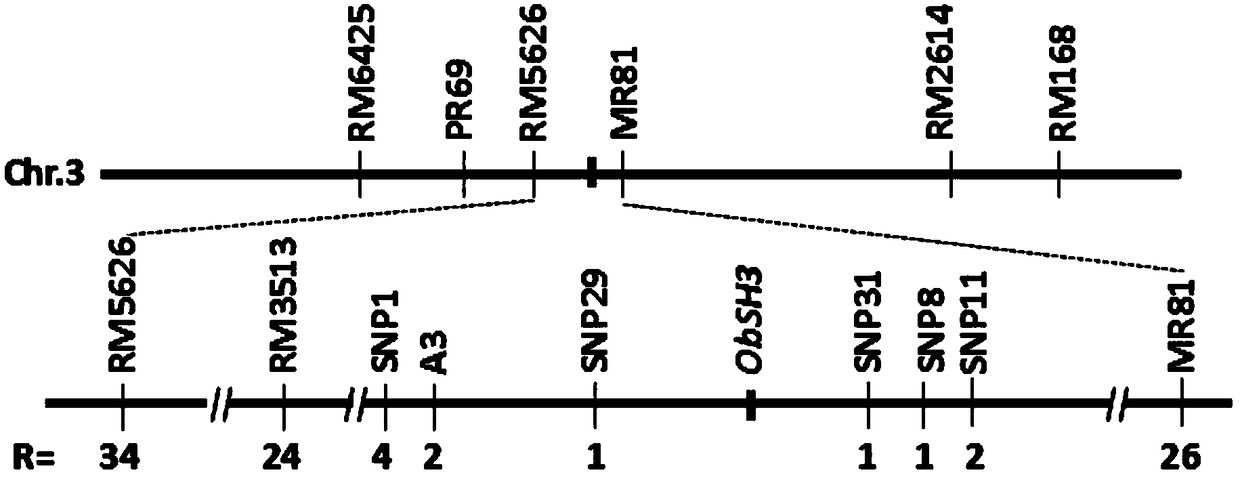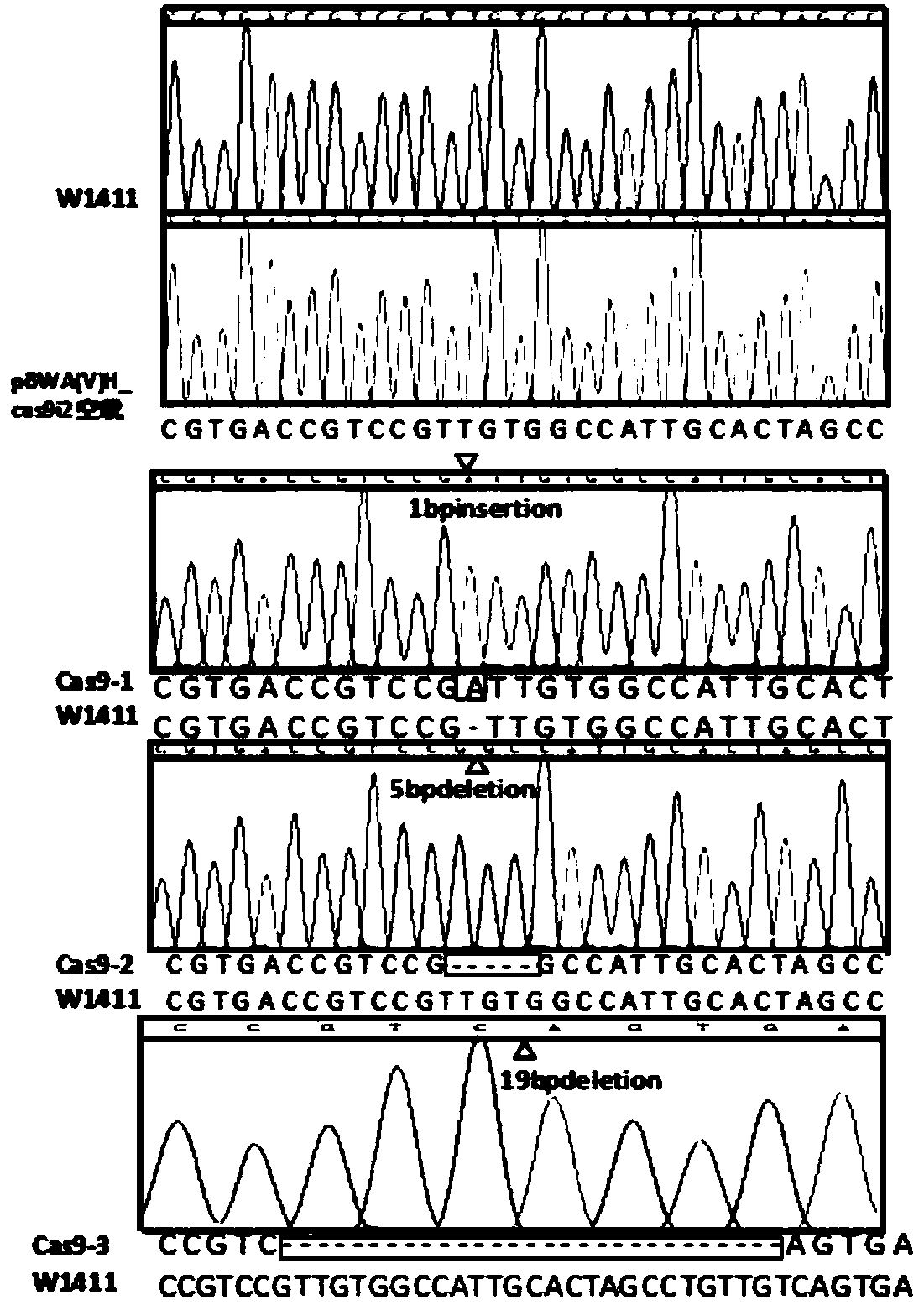Protein associated with rice seed shattering as well as coding genes and application thereof
A technique of encoding genes and shattering, applied in the field of protein and its encoding genes, can solve the problems of poor knowledge about the genetic structure and evolution history of African cultivated rice populations, and the lack of research on African cultivated rice
- Summary
- Abstract
- Description
- Claims
- Application Information
AI Technical Summary
Problems solved by technology
Method used
Image
Examples
Embodiment 1
[0057] Embodiment 1, the localization of regulation African rice grain shattering gene
[0058] African cultivated rice variety IRGC104165 and African wild rice W1411 ( figure 1 ) hybridization constructed a F containing 168 individuals 2 Separate groups. in this F 2 In the population, grain shattering was closely linked with molecular markers RM5626 and MR81, and finally the SH3 gene was located between these two markers. Then, using the 2650 recessive individuals in the expanded segregation population, and designing primers based on the sequence between the markers RM5626 and MR81, the SH3 gene was finally positioned between the two markers SNP29 and SNP31 ( figure 2 ). In Oryza sativa IRGC104165, the physical distance between these two markers is 17kb. According to the sequence prediction of Oryza sativa IRGC96717 (CG14) on the website http: / / www.softberry.com / , there is no candidate gene in this interval. In Oryza africa W1411, the physical distance between these tw...
Embodiment 2
[0059] Example 2, the acquisition of SH3 transgenic African rice and its functional verification
[0060] 1. Acquisition of SH3 gene sequence
[0061] Primers were designed according to the SH3 gene and promoter sequence of African wild rice W1411, and the primer sequences are as follows:
[0062] F: 5'-tgcagagacttccgggttga-3' (1-20 of SEQ ID No.2);
[0063] R: 5'-taagacggacgattaaagtt-3' (reverse complementary sequence of positions 11802-11821 of SEQ ID No. 2).
[0064] The whole genome DNA of African wild rice W1411 was extracted by CTAB method. Using this DNA as a template, a DNA fragment with a length of about 12 kb is amplified, and its sequence is SEQ ID No.2.
[0065] The 1-2208th positions of SEQ ID No.2 are the endogenous SH3 gene promoter sequences of African wild rice W1411, and the 2209-11122nd positions are the SH3 gene sequences containing introns (the 2284-6027th, 6151-7505th , 7633-10168, 10218-10378, 10455-11014 are intron sequences). The corresponding CDS...
PUM
 Login to View More
Login to View More Abstract
Description
Claims
Application Information
 Login to View More
Login to View More - R&D
- Intellectual Property
- Life Sciences
- Materials
- Tech Scout
- Unparalleled Data Quality
- Higher Quality Content
- 60% Fewer Hallucinations
Browse by: Latest US Patents, China's latest patents, Technical Efficacy Thesaurus, Application Domain, Technology Topic, Popular Technical Reports.
© 2025 PatSnap. All rights reserved.Legal|Privacy policy|Modern Slavery Act Transparency Statement|Sitemap|About US| Contact US: help@patsnap.com



